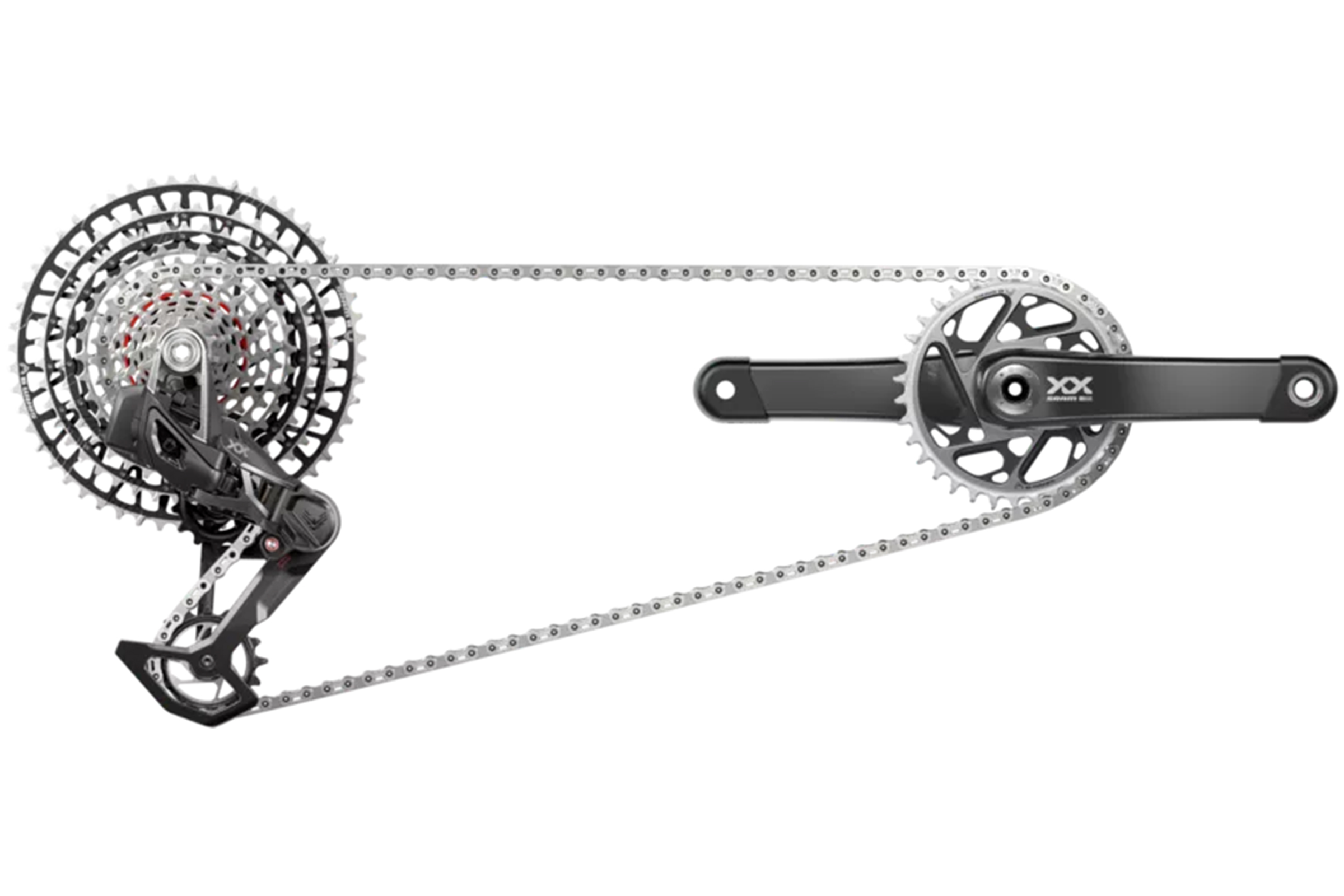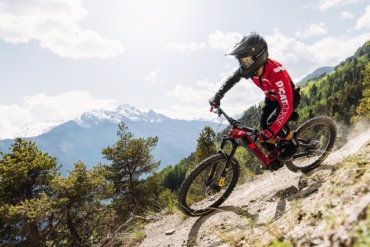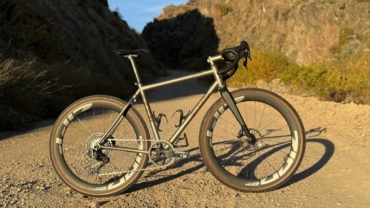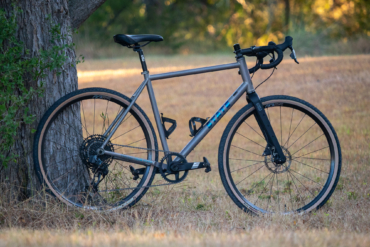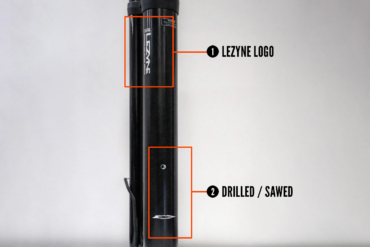Ditching industry standards isn’t something that can be done quickly and is usually done discreetly. But the folks at SRAM, bless their dear hearts, are not very good at keeping secrets.
I first heard a rumor about the new direct mount derailleur last fall through a pro rider. It was substantiated a week later by a bike tester close to the brand. By early winter, photos started to leak online. As a lifelong cyclist and a devout cynic of the derailleur hanger (I’ve bent and broken three in the last 2 years), this was Mozart-level music to my ears.
SRAM formally announced the Eagle Transmission on March 21, and I was fortunate to get a demo bike about a week later to test for this review. They call the system a “transmission” instead of a “drivetrain” because it is integrated and simple, seamlessly connecting to AXS shifters, derailleur, and brakes.
For context, I’ve been riding electronic AXS components since they launched 4 years ago and one-by groupsets for almost a decade, giving me a direct comparison between the new and the old. And I put one month and 300 miles on the new SRAM XO Eagle Transmission.
In short: The SRAM XO Eagle Transmission removes almost every negative of rear derailleurs. It was simple to install and required no adjustments or maintenance beyond charging batteries. Most importantly, it proved incredibly robust, something unattainable until now.
- Gear range: 520%
- Weight: 3 lbs., 9.9 oz. (including battery)
- Cog sizes: 10, 12, 14, 16, 18, 21, 24, 28, 32, 38, 42, 52t
- Cranks: 165/170/175mm, 34T chainring, power meter available
Pros
- Incredibly durable
- Faultless shifting
- No adjustments
- Costs less as a system than predecessors
Cons
- Still expensive
- Requires UDH
- No sacrificial hanger
- Not backward compatible
How Big Is This Update?
SRAM cleverly describes the new Eagle Transmissions as a “seismic shift on what it means to shift a mountain bike.” While that sounds a lot like hyperbole, I think it’s a giant leap forward — perhaps the biggest we’ve seen in years, on par with one-by drivetrains and electric shifting, both of which SRAM spearheaded.
Without a derailleur hanger, limit or B-tension adjustments, or cables, shifting under load was much easier, the installation was simple, and most importantly, it was incredibly burly. No more worrying about minor crashes or rocks hitting the rear derailleur and screwing up the shifting for the rest of the ride.
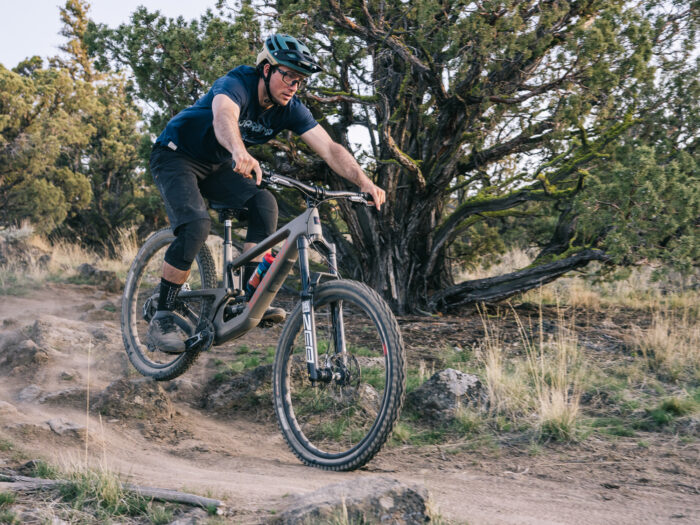
The Eagle Transmissions comes in three tiers — the base level XO, which I tested, starts at $1,299; the midlevel XX starts at $1,599; and the premium carbon XX SL designed for XC racing, which will set you back at least $2,199.
The sticker shock may mitigate some buyers, but it’s worth a second appraisal. It costs less than previous AXS drivetrains as a full system. All three tiers work with the majority of newer frames — if your bike is compatible with a Universal Derailleur Hanger (UDH), it will work with the Eagle Transmission.
The new Eagle Transmissions are one-by 12-speed systems, but the parts will not work with other Eagle components. The transmission is an entirely new ecosystem — derailleurs, cranks, cassettes, chains, brakes, and shifters, meaning you cannot upgrade piecemeal over time.
That said, at least for now, older systems will stay on the market and continue to be serviced by SRAM. SRAM has said that most of their focus going forward will be this direct-mount “T-Type,” so it’s a safe bet that this is just the beginning.
SRAM XO Eagle Transmission Review

First Impressions
SRAM made a large hullabaloo about the ease of installation, so I asked them to ship the demo bike without it built up, so I could see for myself. Their messaging centered on plug-and-play componentry, including the lack of any adjustment process for the notoriously fickle derailleur. In theory, any bike enthusiast with basic tools can install it at home.
Following SRAM’s instruction manual, I quickly prepared, paired, hung, and tightened the derailleur. It was as slick as they claimed. Opening the box to a fully assembled bike took less than an hour. It’s worth noting that SRAM redesigned every element of the ecosystem. While this approach offers major advantages, it also means that it’s not backward compatible at all.
I got out on some local trails that afternoon. After a big snow year, the dirt has been nearly perfect, opening up a lot of testing opportunities — techy, rocky, steep climbs, you name it. For most bike launches of this magnitude, a brand will send a mechanic to ensure that everything runs smoothly.
SRAM did the opposite to prove it was easy to install and more durable than other drivetrains. All I’ve had to do in terms of maintenance over a month of riding is lube the chain twice and charge a couple of batteries. That’s it.
What I Liked the Most
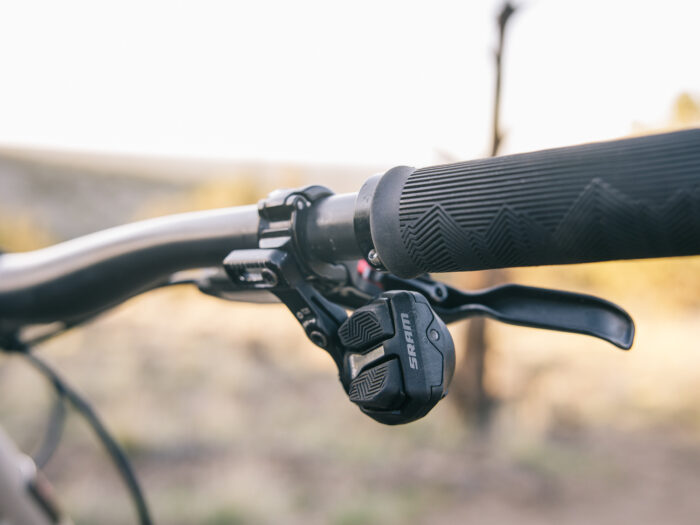
Frankly, there’s so much to like about the SRAM Eagle XO Transmission. What surprised me the most out of the box was how much I liked the new AXS Pod Controller. It can be mounted on either side of the bars, rotated 360 degrees, and programmed to your liking — upshifts, downshifts, and AXS dropper seat post functions. It had an intuitive feel, comfortable ergonomics, and is lighter than the last iteration.
This segues me to the shifting, which similarly is a big leap forward. This was most noticeable when I needed it the most: pedaling hard up steep hills. Shifting through gears was smooth, quiet, and precise, almost without lag. I’ve yet to have a rejected shift, even under considerable force. It allowed for a more seamless power transfer on techy climbs, making it the best shifting I’ve ever tested by far.
All that said, the biggest improvement was durability. Without a hanger or fussy screws, the transmission is so burly that even SRAM published a video of their engineers standing on it while shifting easily, without it bending or breaking. The XO version has the stoutest construction, including a bigger derailleur, aluminum cranks, an e-bike-rated cassette, a stronger chain, skid plates, and more replaceable parts. It shifted accurately even after hard falls that surely would have bent hangers or wrecked the derailleur.
Room for Improvement
Though I had no signs of damage to the transmission after a solid month of testing, it’s hard to know for sure how the system will handle years of abuse. The absence of the derailleur hanger has been great so far, but perhaps with more miles, my conclusion would be different.
Hangers were designed as the deliberately weak link in the system. These sacrificial parts fail in place of the more expensive derailleur. Many riders, myself included, may feel uncomfortable at first without a replacement hanger in our repair kits.
However, while it’s easy to be a skeptical curmudgeon of new technology, history isn’t on your side. Many mountain bikers were similarly worried about SRAM AXS wireless shifting when it launched in 2019, only to be proved wrong. My guess is that this concern with the Eagle Transmission will play out the same way. Adoption may be slow, but eventually, I predict we’ll all come to the dark side.
That said, there are real knocks against it. The battery life is slightly shorter than the old SRAM AXS because the clutch is stronger. With the old or new AXS, you’ll want to carry a spare battery, especially on long rides. It is only compatible with UDH frames, so some bikes won’t work with it. It’s only electronic, so look elsewhere if you prefer mechanical shifting. And, as noted above, it is not backward compatible.
Who Is SRAM XO Eagle Transmission For?

The SRAM Eagle Transmission isn’t just for the gnarliest riders and pro racers. It was made for anyone that wants their shifting to be accurate and crisp, especially under load, or someone like me who’s always been skeptical of the old AXS breaking on even small crashes.
The SRAM XO Eagle Transmission jumped between gears smoothly, was noticeably quieter on the descents, and was much more fun without shifting issues or fiddling with adjustments. The Eagle Transmissions are the first drivetrains designed to address the wear and tear of modern mountain biking.
And, contrary to what many assume, the SRAM Eagle Transmissions are cheaper than previous Eagle drivetrains. The XO costs $125 less than the X01, and the XX saves you $100 on the XX1. The catch is that you have to buy the entire system at once, so it feels like a bigger hit.
So, should you upgrade now? If you have a UDH frame ready for an upgrade or you’re starting a new build from scratch, we highly recommend it. If you already have AXS and are happy with how it performs, you may want to hold off.

